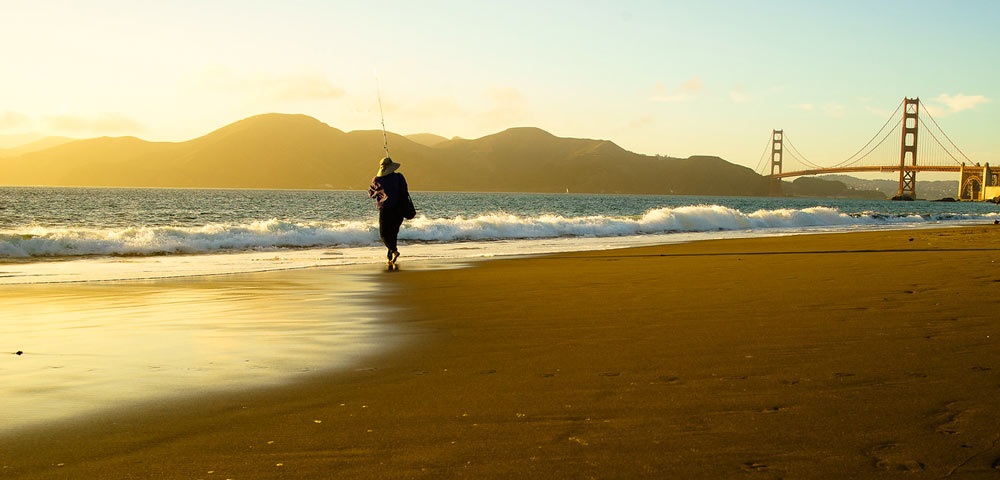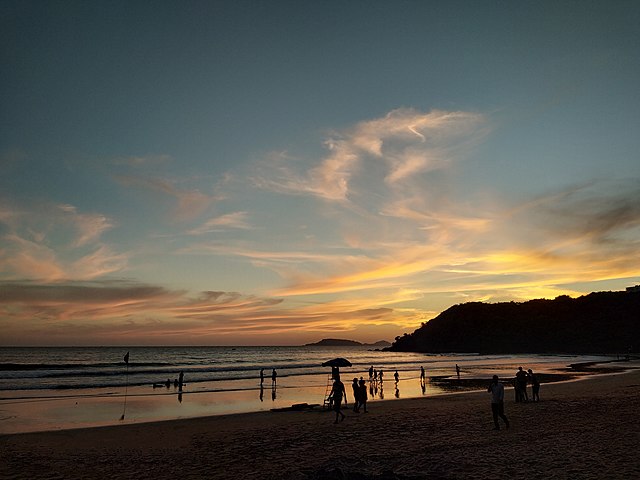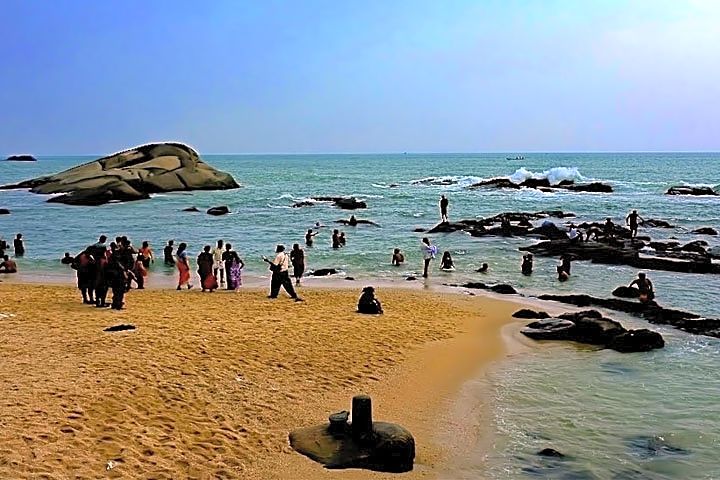This is the third article (S No: VI-360.03) of the series “Visit India 360”. It’s an endeavor initiated by N4M, through a series of articles highlighting the various facets of ‘Indian Tourism’, and in the process synch with the ongoing efforts to make India the preferred destination of World Tourism.
In the present pandemic ravaged times, tourism is one of the important industries that will be at the forefront in driving economic recovery. Pick up any major newspaper of the world, browse the net or venture onto any social media platform, you are bound to come across pictures of happy people thronging the tourist places all over the world. For many countries, despite the pandemic induced recession, tourism has become the only source of national income. Tourism is today one of the largest industries of the world, and along with its allied industries, has become the largest employment generator. This industry, which had a phenomenal growth in the 20th century, is continuing to grow at an exponential rate. The footprints of this global behemoth-its economic, cultural, demographic and environmental significance-can be witnessed all over the world.
Various landforms such as mountains, beaches, coasts, hills, waterfalls, forestsetc. provide distinctive settings to different tourist spots to attract tourists and add to the growth of tourism industry, out of which a beach is the most conspicuous one. Historically, beach tourismhas been the engine powering the growth of tourismand it continues to do so even today. Earlier, people would crowd beaches of the world during months of warm winter to enjoy mellow sunshine but nowadays, beaches are filled to capacity every day of the year. The reasons for this are not far to seek as a beach combines the usage of land and water resources to provide a large number of recreation activities to tourists who may indulge in sunbathing, swimming, sailing, fishing, walking, surfing and other water sports. It offers to its visitors scenic and soul-stirring beauty, plenty of water to frolic, diverse history and culture of the place, good infrastructure, great healthy food and a rich biodiversity.
The growth of beach tourism has been very significant and it has provided huge benefits, of the economic kinds, to the host community. It is the backbone of the tourism industry and one of its earliest modern forms. People are inevitably attracted to beaches because of their sheer beauty but the elements of relaxation, recreation and leisure also contribute to their present allure and desirability. The growth of beach tourism, styled as a resort destination, almost mirrors the growth of modern tourism. Different types of international tourists have turned this sector, with its lure of sea, sun, sex and sand, into one of the most successful types of tourism today.
But it was not so always. Earlier, the beach was not seen as a place to go to relax or to have a good time. Things people do at a beach were deemed offensive and immodest then. The origins of beach tourism or the beach as a desirable place, full of leisure and pleasure, are somewhat different and took time to grow into its present form.
The Origins of Beach Tourism
The origins of beach tourism go back to antiquity when the Romans built villas in Southern Apennine peninsula. In the following centuries, especially from 1840-50 onwards, a visit to the beach has been tied to sun, sea and their therapeutic properties. Today, an excursion to the beach may seem most natural-go to the beach, jump, swim, surf or play in the waves, build sandcastles or simply splay down on the sand. But the beach was not always considered a destination for leisure, pleasure, entertainment or relaxation. Rather, it was thought to be a place that could be wet, cold, full of sand, hot, desolate, comfortless, drab and dangerous as one could always drown in the sea.
This image of the beach as a drab, desolate and dangerous place owes much to popular culture of the time. There are very few instances in historical records where people are shown or depicted relaxing on a beach. Right from ancient times till the 1800s, any discussion of the beach gave rise to anxiety and fear in people. It was thought of as a dangerous and forbidding wilderness where shipwrecks happened, people were marooned and natural disasters vented their fury.

In the works of Roman greats such as Horace, Ovid and Seneca, the sea is described as an “unsociable” force of nature that keeps people apart. In the Bible, the sea is describes as possessing destructive and mysterious force while in the Genesis flood narrative, it is described as the “Great Abyss” that caused the Great Deluge. In various plays of the greatest writer in English, Shakespeare, the sea causes tempests and shipwrecks and is the progenitor of chaotic journeys.
But the image of the sea begin to change in the 17th century when the Dutch painters began to make paintings of the seascape. This prompted the people to visit the sites to ogle at the scenery observed by the painters. Around the same time and the 18th century, the French poets of the time began to describe the sea in more flattering terms.
In the period that followed, many contemporary English physicians came to the conclusion that a dip in the cold water of the sea could cure people suffering from maladies of “spleen” and “melancholy” as bathing in turbulent, salty and cold water of the sea would benefit people with poor health. Though such ideas might seem bizarre in the present times, they led people to deeply appreciate the benefits of the sea coast.
In 1778, oxygen was discovered by French chemist Antoine Lavoisier which led to a proliferation of theories regarding health benefits accrued by more pure and oxygenated air at the beach. All this while, Industrial Revolution was in full swing in England, factories were being set up all over the countryside, soot, dirt and smoke was the order of the day and the English towns were getting grungier. The residents wanted to get away from the crowded towns with their foul air and dirty water. With the development of better transport systems and disposable income, people went for tourism in a big way.
In 1783, the future King George IV went to the seaside town of Brighton as he was advised that a dip in the sea would help his medical condition. Following in his footsteps, the English upper class elites vied with each other in visiting different beaches. In the following years, this fashion percolated down the social ladder.
1850s onwards was the boom time for railways which directly helped beach tourism as visiting seaside towns became easier and affordable for the lower classes as well. Around the same time, factories began to close down for maintenance one week per year and holiday periods were instituted for workers. This further led to the development of beach tourism.
This English craze for the beach began a trend of mass tourism and led to the development of resorts. During the early years of the 19th century, beach resorts were coming up in Scandinavia, north Germany, south-west France, Normandy etc. As the century came to a close, resorts had gone across the oceans to the USA where coastal places such as New Jersey, Florida and other resort towns were developed. Later, beach resorts spread in the Mediterranean, the European colonial empires, Australia, New Zealand, Fiji, South Africa, Latin America and finally conquered Asia. Now, holidaying at the beach became the favourite pastime of the people.
1960s onwards, sports such as beach volleyball and surfing caught on people’s fancy and created further diversity in recreational activities offered by a beach destination. This English invention of beach holiday led to phenomenal growth of international tourism post the Second World War. Besides, enjoyment, health and relaxation, the beach destinations sometimes came packaged with spa resorts and gambling casinos such as the French Riviera and Monte Carlo.
In the present times, the beach holiday has become so widespread and popular that some places, in order to grab a piece of the tourist pie, have created fake beaches by strategically placing artificial sand.
Beach Tourism in India
India, the country, has been blessed by nature. On its north stands the Great Sentinel, the mighty Himalayas, which prevents the cold winds from blowing into the Indian mainland and separates the country from the rest of Asia, thus providing it with a unique geographical, cultural, linguistic and spatial identity. The country’s coastline is around 7,500 km long, extending from Gujarat in the west, going down south through Kerala, rounds off at Kanyakumari in Tamil Nadu and then goes up to West Bengal in the east. The Arabian Sea flanks the country in the west, the Indian Ocean laps at its feet in the south while Bay of Bengal is in its east. A large number of beautiful beaches dot this ling coastline. This huge variety of beaches satisfy the wanderlust of all discerning tourists.
All the Indian beaches have crystal blue waters which entice and invite the tourists to have fun in the frothywaves. A large number of water sports are available for the visitors to enjoy. Some such activities are fishing, nature walks, boating, surfing, kayaking, windsurfing, parasailing etc. Apart from these activities, beaches also provide an array of delectable and delicious local cuisine, local and colonial architecture, historical sites, spa resorts, ayurvedic and wellness facilities, yoga, shopping to the visitors.
Indian states where these beaches are located are Gujarat, Maharashtra, Goa, Karnataka, Kerala, Tamil Nadu, Andhra Pradesh, Odisha and West Bengal.
The state of Gujarat has a large number of picturesque beaches such as Gopnath, Bet Dwarka or Shankhodhar, Ahmedpur Mandvi, Diu, Somnath, Chorwad, Veraval and Madhavpur. Chorwad beach, famous for its rocky shores, lies at a distance of 66 km from the erstwhileprincely state of Junagadh. Chorwad Palace or Daria Mahal, built during 1930s stands facing the beach. Here, the tourists indulge in long walks, fishing, swimming, boating and different water sports. Other notable places worth visiting are Somnath, Porbandar etc. The white beach at the pilgrimage site of Dwarka with its teeming marine life and coral reefs is worth a visit. It also has an old lighthouse. The twin beaches at Daman and Diu provide the perfect combination of the sea, sun and sand.
The coast of Maharashtra is around 720 km in length on the Arabian Sea. It begins from Bordi and Dahanu and goes down south till Goa.The lovely beaches in the state are Gorai, Madh Island, Manori, Alibaug, Kihim, Juhu, Bordi, Arangal, Arnala, Murud and Kashid. To the visitors, these beaches provide golden sands to sunbathe, exciting water sports, and the chance to discover hidden remote and quaint villages and explore temples, churches and grand forts. Juhu beach, located in the film city of Mumbai, attracts tourists all the year round. Tarkali beach, located in Sindhudurg, has crystal clear water where tourists enjoy scuba diving, snorkeling, water rafting etc.

The tiny state of Goa, the beach capital of India, has a number of sun kissed beaches like Vagator, Varca, Bogmalo, Calangute, Anjuna, Dona Paula, Baga, Benaulim, Condolim, Chapora, Cavelosim, Miramar, and Pololem. Baga beach in north Goa, is famous for parasailing, dolphin cruises and boat rides. The “queen of beaches”, Calangute is 15 km the capital city of Panjim, is a great place for tasting delectable local delicacies. These beaches truly epitomize the Goan culture of fun, frolic and feni.
Moving down south, we arrive in Karnataka whose long coast is dotted with beautiful beaches such as Malpe, Karwar, Bhatkal, Murudeshwar and Maravanthe. The Murudeshwar beach in Uttara Kannada has a temple dedicated to Lord Shiva which attracts pilgrims. The beach at Malpe has a sea walkway which provides a breathtaking view of the beach, besides Daria Bahadurgd and St. Mary’s Islands,
Riding the coastline and going extreme south lies Kerala, God’s own country. The state is covered with verdant and lush green carpet. Some of its beaches are Cherai, Bekal, Kannur, Varkala, Marari, Kovalam, Alappuzha,Ezhimala, Shangumugham, Beypore, Dharmadam etc. These beaches are less crowded and offer seclusion, tranquility and solitude to the tourists. The Kovalam beach, famous for its ayurvedic spas and salons, is 16 km from Thiruvananthapuram and has a number of resorts along its coastline. Fort Cochin beach in Old Kochi, is famous for Chinese fishing nets and colonial architecture.Bekal beach, In Kasargod, is a shallow beach which is famous for Bekal Fortress.
Adjoining Kerala is Tamil Nadu and its famous beaches Kanyakumari, Rameshwaram, Mahabalipurm, Marina, Dhanushkodi, Ariyaman and Covelong etc. Kanyakumari is the southernmost point of the Indian subcontinent and its main attractions are Vivekananda Rock Memorial and statue of Thiruvalluvar. The tourists throng here to witness sunrise and sunset. Marina beach in Chennai is the second longest beach in the world. The fascinatingly beautiful Mahabalipuram beach is located in a UNESCO World Heritage Site which is famous for its sculptures, cave sanctuaries and great monuments.

The famous beaches of Andhra Pradesh are Ramakrishna, Rushikonda, Mypadu, Bheemunipatnam, Suryalanka, Manginapudi and Vodarevu. RK or Ramakrishna beach is located in Vishakhapatnam where tourists enjoy sunbathing, swimming and beach volleyball. INS Kurusura Submarine Museum is an added attraction of the place. The beach at Mypadu is 25 km from Nellore and is famous for its cruise rides. The beaches of the state are ideal for relaxation, sightseeing and enjoyment.
The state of Odisha too has its own share of pristine beaches such as Gopalpur on Sea, Chandipur, Balighai, Paradeep, Konark and Puri which are visited by thousands of domestic and international tourists. The beach at Konark is a fine one where the famous Sun Temple, located 3 km away, is an added attraction. Gopalpur beach, 16 km from Brahmapur, is a neat and less crowded beach.The colour of the sea here is a stunning emerald green.The town was the site of an ancient sea port during the heydays of the Kalinga Empire. The Puri beach is supposedly the finest beach of the country. Tourists gather here to the sunrise and sunset and take in the offerings of the dance and music festival held here every year. The beach of Gopalpur on Sea is the perfect place to visit during winters and rid oneself of the worries of city life. The Chandipur beach, near Balasore, has a unique and mysterious charm of its own. Here the tourists can walk into the beach as the sea water recedes around 5km from the shoreline during ebb tide and returns back at high tide. This happens twice a day!!
West Bengal too has its share of beautiful beaches some of which are Digha, Tajpur, Bakkhali, Mandarmani, Shankarpur, Junput, Falta, Udaipur and Sagar Island. Digha town is located at the site of Beerkul which finds mention in Warren Hastings’ letters as “Brighton of the East”. The beach is visited by families on weekends. The Mandarmani beach is a serene beach where tourists can witness sunrise and sunset in peaceful surroundings. Shankarpur beach is a favourite haunt of photography enthusiasts. The Bakkhali beach, located in the Sundarbans, has a tranquil and peaceful atmosphere.The beach at Tajpur has a profusion of lush greenery and blue waters. Here, one can have plenty of sumptuous seafood.
To Conclude
Beach tourism has a resource combination that is unique i.e. an interface of sea and land. This combination provides it with beautiful vistas of scenic beauty. Besides, most Indian beach towns have rich historical and cultural heritage. Besides, the availability of means of recreation and adventure, wellness activities and plentiful shopping has led to a good growth in both number and volume of tourists visiting Indian shores in the last decade or so. Though the country has a surfeit of unique beaches and the Indian government has identified the sector as niche tourism, it lacks a proper management and development to promote ecotourism on a large scale.
Beach tourism in the country has some sore points as well. As interested builders and other assorted individuals rush to beaches to develop resorts, hotels and other such commercial and residential properties and compete for exclusive rights to beachfront areas, this leads to detrimental impact on local ecology, environment and culture. As the stakeholders are found lacking in ability to make sound and correct decisions because of complex sustainability issues, it leads to problematic development on the beaches which leads to congestion, problems with the local community, lackluster economic performance and environmental degradation.
The increase in hedonistic activities and expectations lead to an increased crime levels, thereby causing a decline in desirability quality of the experience of a beach resort. This further leads to the dwindling of uniqueness and exclusivity of resort holidays. In order to sustain and grab the attention of tourists, more desirable forms of niche tourism must be offered to them. To ensure that their experiences are truly exclusive, unique and holistic, relatively unexplored beach areas must be developed that entail offbeat experiences which arenot focused on pleasure aspect alone.
Beach tourism often lacks a comprehensive approach linking sustainability indicators and carrying capacities in design models and planning regulations. For the development of sustainable beach tourism, conceptual sustainable design models including an array of acceptable capacities based on the ecological, social, psychological, physical, economic, and managerial capacity thresholds of sites are necessary.
Beach tourism in India has a lot of scope for development but the local communities lack awareness about significant economic benefits that this sector can bestow on them. In order to exploit the huge economic clout of this form of tourism, they should be at the forefront of support for it. Since India is at an initial stage, the development, promotion and sustenance of beach tourism without any associated detrimental social, cultural and environmental impact, an integrated approach by all stakeholders is the need of the hour.




















Very nice write up .This article will surely instill eagerness in the mind of tourists to visit those beautiful beaches of India. Great information is provided thr’ the article.. looking forward for more
Great Write up. You have infused so much informations on the origin of Beach Tourism worldwide and finally Indian Beach Tourism Evolution.
Expecting more articles like this from you on different segments of Indian Tourism
Good work 👍
After reading your article I found myself settled at Vagator beach in Goa reminiscing my earlier visit to the place. Your lucid writing style is appreciable. I wish I could write like you . 👍👍
Indian beaches, if properly maintained can leave any world beach behind. With a vast coastline India is blessed with the opportunity to develop it’s coastal hotspots and be among the leaders in Beach Tourism internationally.
Vry nice article..